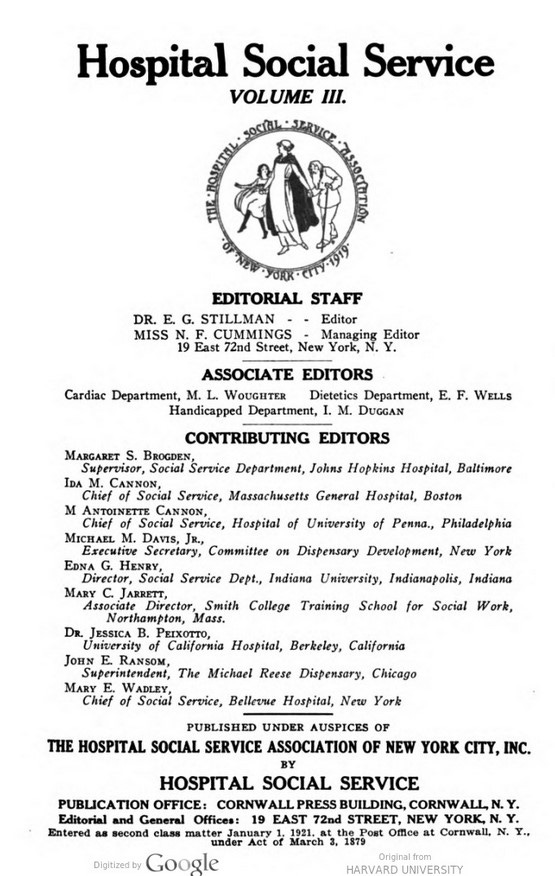Early struggles as social work develops
Just as true now as in early American social work
Social work started slowly and with a struggle in many fields of work. For a new way of working, this is probably inevitable. It is still mirrored in countries today where social work is only just setting out on its path to acceptance.
Here’s an example. In January 1921, fourteen years after American hospital social work is claimed to have started, the journal Hospital Social Service (going monthly for the first time) published a survey of hospital social services. About 300 of the 9,000 hospitals in the USA had social service departments, employing about 850 salaried workers in total. There were departments in about one in ten of 3,000-3,500 public hospitals. What did the survey find?
The work of the social services was to facilitate medical treatment plans by working on patients’ personality difficulties and ‘habits’, and adjusting home conditions, work and community relations. The casework with individual patients, involved:
Reporting information about environment or personality affecting treatment;
Home or work obstacles to treatment;
Arranging supplementary care;
Patients’ education to support cooperation with medical treatment.
Administrative work, either as part of the individual help or by helping to assess living conditions or finances, included:
Assisting with admission arrangements;
Getting financial information as a basis for fees;
Arranging interpretation for non-English speakers;
Helping manage dispensaries [out-patient clinics];
Giving information to external services;
Escorting or arranging transport for patients.
The Report argued for independent management through a head social worker responsible to the hospital management, and suggested that there should be a regular meeting of an advisory committee representing interests in the development of the service. The assumption was that you have to have a structure within a new set of roles, and a process for making links outside the new roles.
The Committee looked at education for hospital social service staff. There were schools of social work in major cities and elsewhere, but no agreed curriculum. A sample of workers found that about half had nurse training, and half not. Many departments employed only nurses, but a few employed no nurses at all. Suggestions for a curriculum were: knowledge of the social implications of the main diseases (the main feature missing in existing preparation of hospital social service staff), ‘understanding of social, industrial and economic problems as they affect family life’ (p 9), knowledge of the aims and work of the main relevant agencies, understanding of the medical profession and healthcare institutions and the ability to ‘unite both knowledge and personal qualities in attaining understating of people and practical results in co-operation, guidance and leadership’ (p.10). The last of these could only be achieved by experience with good supervision. not a lot different from healthcare social work now.
The main recommendation on education was to devise and mount suitable courses of training. Here, I’ve reported the main items of the summary, but there’s an amazing amount of detail in the full report, which you can read starting from: https://babel.hathitrust.org/cgi/pt?id=hvd.hc3vcc&seq=1
American Hospital Association (2021). Report of the Committee on the Survey of Hospital Social Services. Hospital Social Work. 3(1), 1-14.





